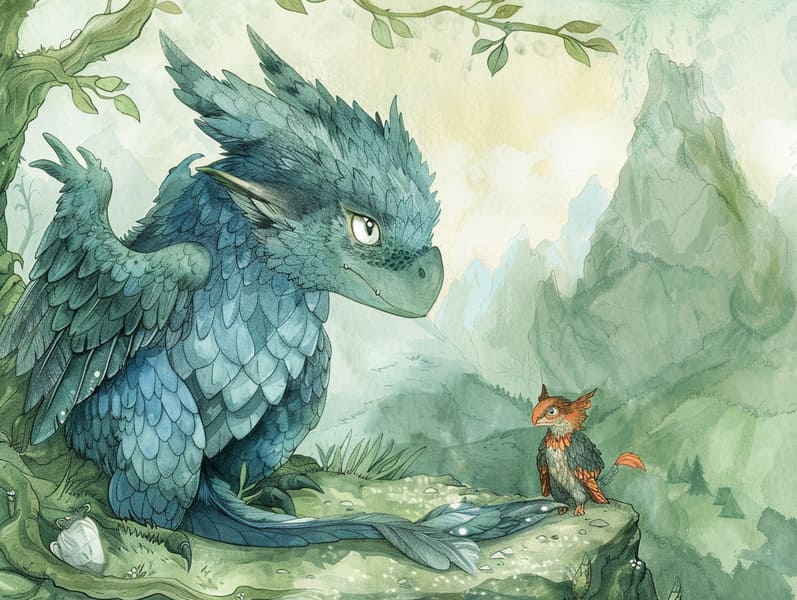Appreciating the Wonder of Nighttime Adventures: Building Valued Experiences with Your Children
Appreciating the Wonder of Nighttime Adventures: Building Valued Experiences with Your Children
Blog Article

The end of the day is a precious time for caregivers and children. It’s a moment to calm down, nestle in, and experience the wonder of stories.
For ages, nightly tales for children have been a treasured practice, offering more than just a way to rest. They provide an chance for affection, education, and fostering vision.
The Power of Bedtime Stories
Evening stories for little ones serve more than a way to complete the day. They play a essential role in a child’s development and in building the guardian-child link. Here’s why they are significant:
1. Shared Moments: Reading together at bedtime strengthens a special bonding moment between parents and children. It’s a moment of togetherness that helps children feel valued and content.
2. Vocabulary Building: Hearing tales helps children develop their language skills. They gain new expressions, understand sentence structures, and enhance their comprehension and interpretation abilities.
3. Fantasy and Imagination: Stories for kids usher them to magical worlds, encouraging inventiveness. They visualize characters, settings, and adventures, which stimulates their inventiveness.
4. Emotional Development: Stories for little ones often present characters facing obstacles and reactions. These stories help kids interpret and navigate their own sentiments, fostering emotional maturity.
5. Thinking Skills: Engaging with a story helps children develop attention span, remembrance, and thought processes. They develop to follow lines of thought, remember aspects, and project conclusions.
How to Incorporate Bedtime Stories
Developing a night-time practice that includes storytelling is simple and gratifying. Here’s how to create a beloved part of your end-of-day tradition:
1. Pick a Cozy Area: Pick a peaceful place where you and your child can snuggle up without noise. A snug bed or a peaceful reading nook works ideally.
2. Choose a Specific Time: Set a set time each night for reading. Regularity helps children be accustomed and makes the ritual more manageable.
3. Pick Age-Suitable Stories: Choose tales that fit your child’s understanding. Toddlers might prefer visual books with easy plots, while more mature kids may be interested in longer stories with more complicated tales.
4. Interact with the Story: Try to the tale be captivating by adding different tones and voices, adding audio effects, and encouraging your child to join in. Ask questions about the story to keep them engaged.
5. Make a Peaceful Setting: Turn down the lights, use soft voices, and create a soothing environment to help here your child ease into rest.
Discovering Great Bedtime Stories
There are many sources where you can find wonderful bedtime stories for children. Here are some ideas to explore:
1. Books for Kids: Go to your community library or bookstore to find a large selection of bedtime stories for kids. Going through the options together can be a wonderful activity that also allows children to pick stories that capture their interest.
2. Web Sources: There are many sites that offer free bedtime stories. Sites like kids' story platforms provide a variety of short stories for kids that you can print out. These websites are great for finding new and varied stories without expense.
3. Audiobooks and Apps: For nights when you’re too weary to read, explore audiobooks or storytelling apps. These can provide a soft-spoken reading to read your child a story, ensuring they still get their bedtime story fix. Apps often offer interactive features that can capture their attention further.
4. Personal Stories: Create your own stories fitting your child’s likes. Personalized stories can be remarkably engaging and meaningful. You can include your child in the storytelling process, making them a part of the adventure.
Benefits of Shorter Stories
Compact tales for little ones are quite great for bedtime. They provide all the positives of longer stories but are more brief, making them perfect for settling down before sleep. Here’s why short stories are a perfect choice:
1. Easy to Follow: Short stories are uncomplicated and easy for kids to get, even after a long day. They can quickly grasp the narrative and enjoy the story without becoming uninterested.
2. Instant Engagement: Compact stories readily engage children, capturing their interest and wonder. This makes them wonderful for keeping bedtime practices simple yet enjoyable.
3. Various Options: To-the-point tales allow for variety in your bedtime reading. You can get a different story each night, keeping the habit exciting and exciting for your child.
4. Time-Saving: For busy parents, compact stories are a efficient way to check children still get their nightly dose of storytelling. They fit well into a full schedule while still offering the full advantages of a bedtime story.
The Power of "Read Me a Story"
The simple phrase, “Will you read me a story?” can give a world of magic for children. Responding to this request not only caters to a child’s requirement for attention and engagement but also develops lasting experiences. Here’s why it’s enchanting:
1. Tie: Narrating to your child creates a deep emotional connection. It’s a time for togetherness, sharing, and bonding.
2. Legacy: Starting a bedtime story tradition creates a treasured tradition that children enjoy every night. It’s a custom that can be transferred through generations.
3. Development Together: As you tell stories, you’ll observe your child’s maturation and advancement. Their queries, reactions, and understanding of the stories grow, offering insights into their developing minds.
4. Safe Environment: Bedtime stories provide a safe space for children to navigate emotions, face fears, and find comfort in the reliable presence of a parent.
Summing Up
Children’s bedtime stories are a effective tool for nurturing a child’s maturation and developing unforgettable memories of togetherness.